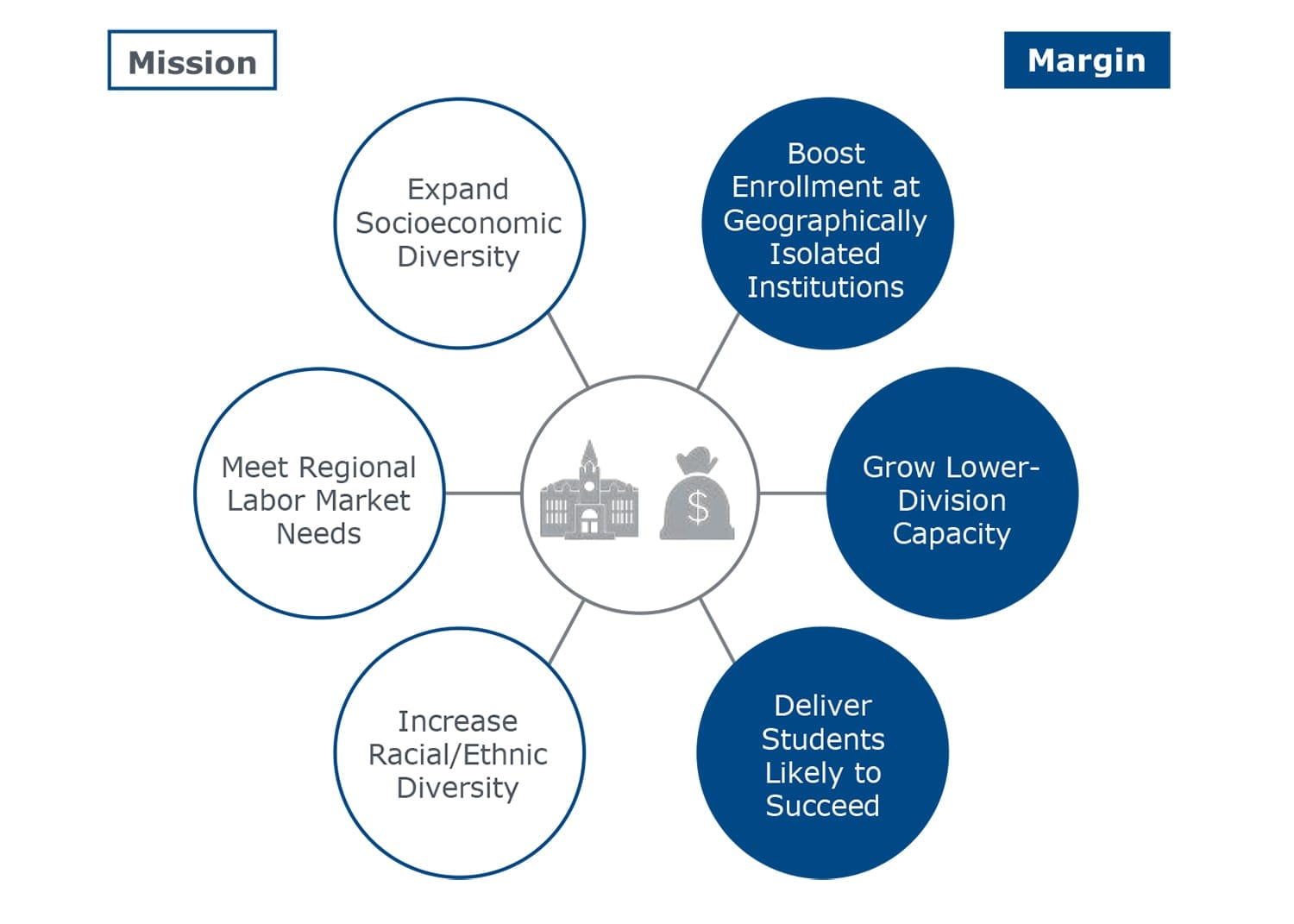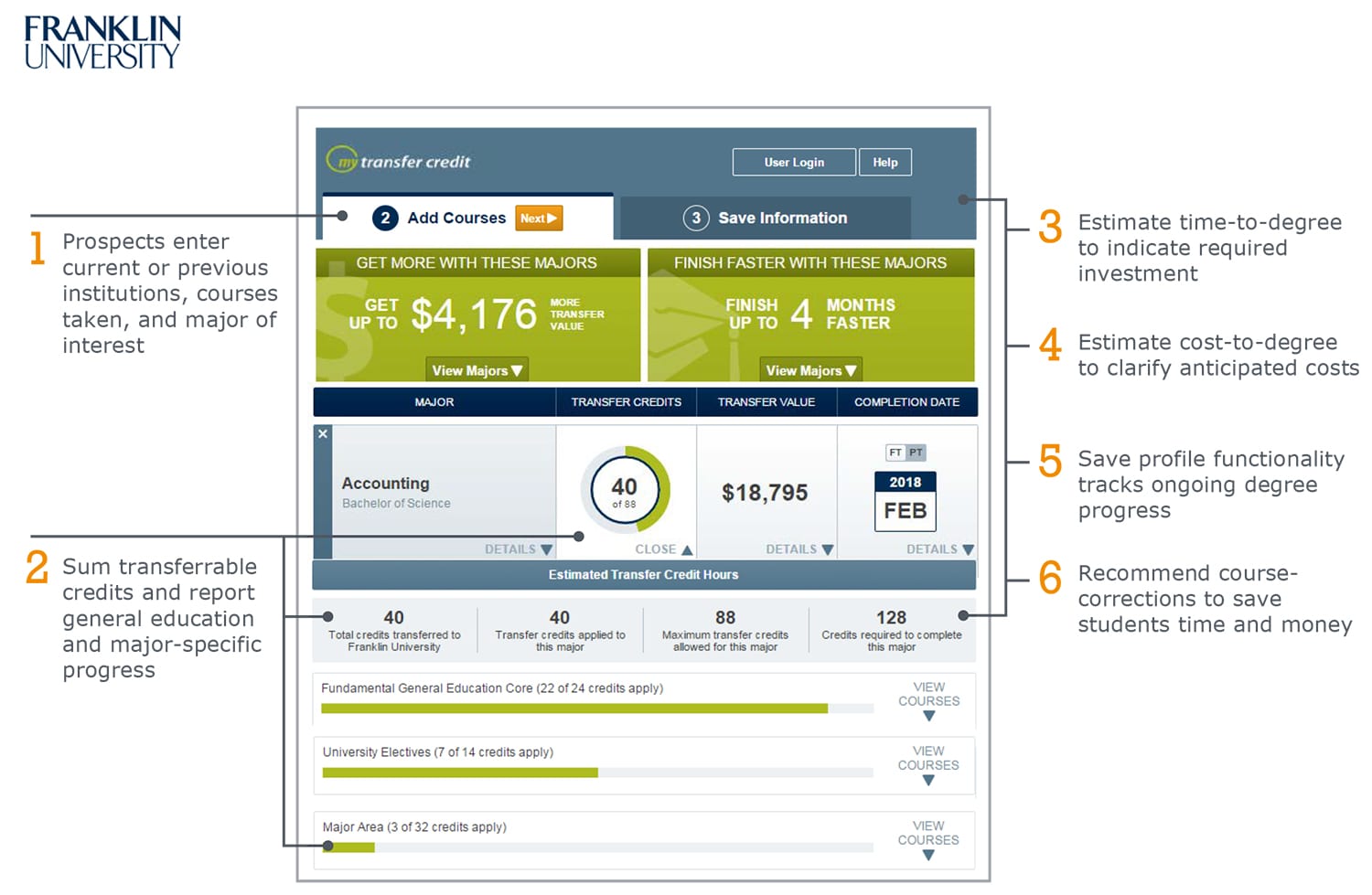Transfer students fulfill mission and margin objectives
Given increasing competition for first-time, full-time students, growing pressure on tuition revenue, and stagnating state support, four-year institutions are looking to community college transfer students to augment undergraduate enrollments and tuition revenues. Community colleges provide a viable option to meet enrollment goals while also satisfying mission objectives.
Win-Win: Community College Transfers Benefit Four-Year Missions and Margins

Millions of community college students lost on the path to transfer
Although nearly six million community college students indicate intent to transfer to a four-year college or university, only two million follow through. By making investments in a transfer strategy, four-year institutions could tap a market of four million community college students who had at one point intended to transfer.
To move transfer prospects from inquiry to enrollment, four-year institutions must address three fundamental questions in time to inflect students’ enrollment decisions.
Three Key Transfer Enrollment Questions

Without answers to these questions, prospective students ignore four-year institutions that may be a good academic fit or abandon their transfer aspirations altogether. Four-year institutions that communicate answers to transfers’ key questions earlier in the admission process not only expedite students’ decision-making processes but also gain competitive advantage as a “transfer-friendly” institution.
Answering questions before they’re asked: Franklin University’s self-service degree forecast
To improve transparency on credit equivalencies and time-to-degree for prospective transfer students, four-year institutions need to provide estimated credit equivalency information before prospects apply. Franklin University’s enrollment management office developed the “My Transfer Credit” tool, a web-based self-service platform that permits prospective transfer students to generate personalized credit evaluation reports and time- and cost-to-degree estimates, as shown below.
Overview of Franklin University’s “My Transfer Credit” Tool

Cost effective self-service tool drives transfer enrollments
Franklin incurred few upfront costs to develop their online credit evaluation tool because they leveraged internal staff and an existing student information system. Enrollment management staff uploaded historic credit equivalency tables and articulation agreements, and a cross-campus committee built the tool in-house over five months.
Credit Evaluation Self-Service Tool Development: Resources Required

These front-end investments helped Franklin stand out to prospective transfer students, leading to incremental increases in applications and enrollments while boosting yield.

Is web development a barrier? Adopt this low-cost work-around
Even if you don’t have an in-house user-interface expert, you can still develop a transfer web tool. Institutions can leverage students’ skills by running a tool-development competition with a cash prize. To grow transfer enrollment and student service, one private liberal arts institution launched a three-month student competition in Sept. 2015, with a $500 prize. Participants formed teams that accessed the institution’s historic credit equivalency tables to build online self-service degree forecast tools for prospective transfer students. The winning product will be installed on the institution’s transfer admissions website, enabling prospective transfer students to self-serve answers to their core questions.
Get more insight on this topic with our on-demand presentation
Our webconference session will teach you how to identify and eliminate barriers to entry for community college prospective transfers and enable you to streamline the transfer process and grow your enrollment. Watch the recording.

